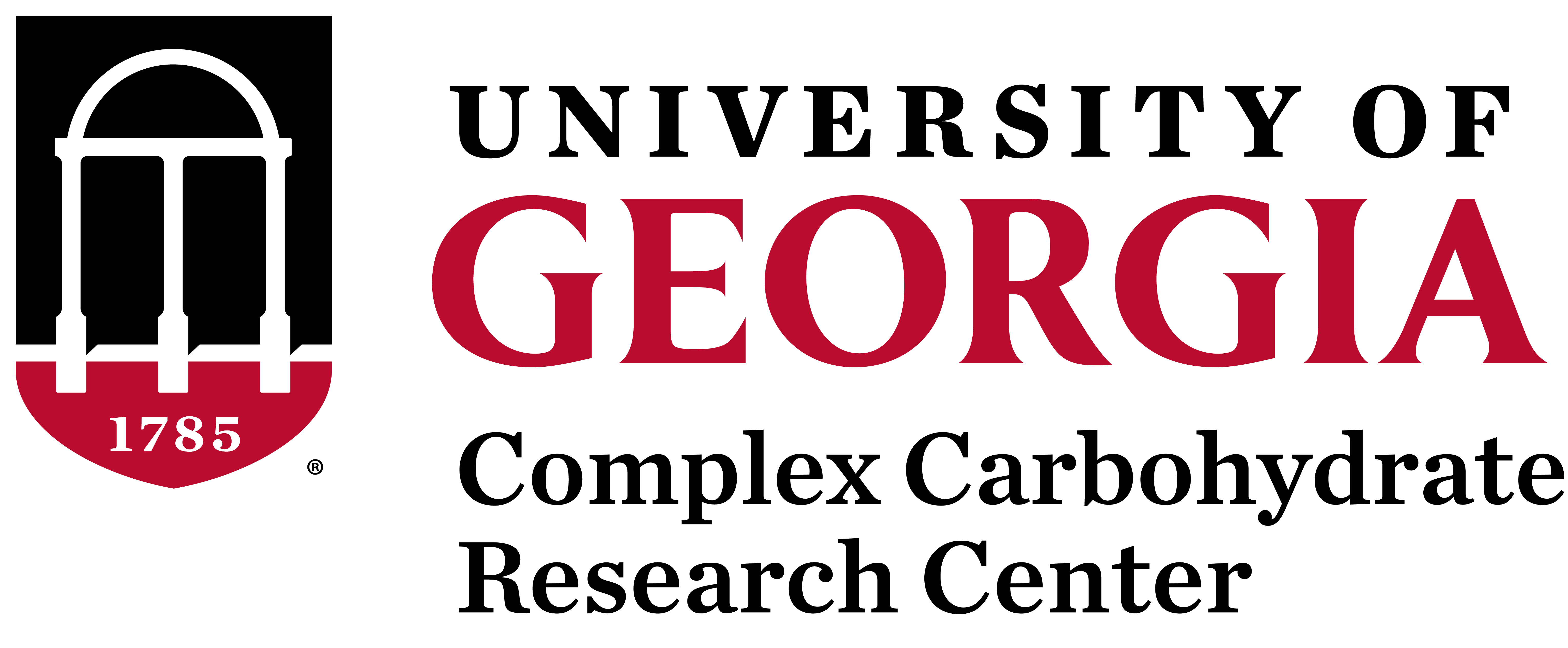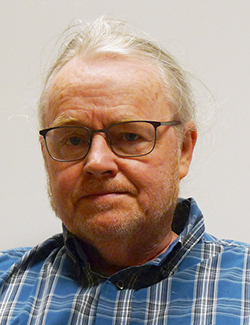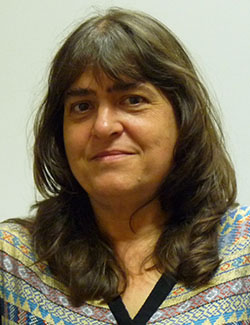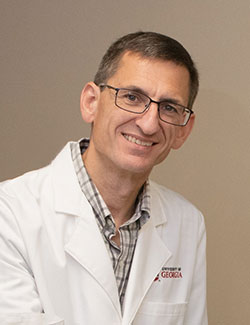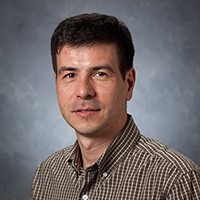Malcolm O’Neill
Short biography:
Malcolm O’Neill received his graduate training in biochemistry at Trent Polytechnic (Nottingham, England). In 1977, he joined the group of Robert Selvendran at the Food Research Institute (FRI, Norwich, England) where he worked on the structures of polysaccharides and proteoglycans present in the cell walls of fruits and vegetables. Whilst at the FRI, he also collaborated with Vic Morris on the structure and properties of pectins and several microbial polysaccharides. Malcolm joined the Complex Carbohydrate Research Center in 1985, shortly after the group of Peter Albersheim and Alan Darvill had arrived in Athens from Colorado. Malcolm is now an Associate Research Scientist.
Research Interests:
Malcolm’s research is focused on the structure and function of plant cell wall polysaccharides. This research involves the use of advanced analytical techniques including mass spectrometry, NMR spectroscopy and high-performance liquid chromatography.The current target of his research is the structurally complex pectic polysaccharide referred to as rhamnogalacturonan II (RG-II). RG-II exists as a borate cross-linked dimer in the cell walls of all vascular plants. Plants unable to form this cross-link have cell walls with abnormal biomechanical and biochemical properties, which severely impacts their growth and productivity.
Our goals are to (i) understand how the structure of RG-II contributes to its site-specific interaction with borate, (ii) determine how borate cross-linking of RG-II contributes to the properties and functions of the plant cell wall and (iii) establish why the cross link is required for normal plant growth and development. To this end, we are producing a collection of structurally defined natural and enzymically-generated RG-II glycoforms that differ in their ability to form the borate cross linked dimer. The experimental data obtained with these glycoforms is used by our collaborators Mike Crowley and Vivek Bharadwaj (National Renewable Energy Laboratory, Colorado) to aid and validate their molecular dynamics and quantum mechanical simulations of the RG-II monomer and dimer.
Maria Peña
Short Biography:
Dr. Peña received her B.S. in Biology in 1989 and her M.S. and Ph.D. degrees in Plant Science in 1994 and 1996, respectively, from the University of Santiago de Compostela (Spain). Prior to joining the CCRC in 2003, she was a Postdoctoral Fellow from 1998 to 2002 in the Department of Botany and Plant Pathology of Purdue University (IN). Currently, Dr. Peña is an Associate Research Scientist at the CCRC and funded investigator of the DOE Center for Bioenergy Innovation (CBI).
Dr. Peña has over 60 full publications, 1 book charter and 1 patent.
Research Interests:
Dr. Peña’s research focuses on several topics related to plant cell walls including i) synthesis, structure, and biological function of cell wall polysaccharides, ii) plant biomass deconstruction by microorganisms, and iii) production of plant cell wall-derived biomaterials. This research involves the application of advance mass spectrometry and NMR spectroscopy techniques for the determination of polysaccharide structure, functional characterization of carbohydrate-active enzymes and protein-carbohydrate interactions.
Artur Muszynski
Short Biography:
Dr. Muszyński is an Senior Research Scientist at the CCRC. He received his M.Sc. degree and his Ph.D. degree in Biology from the University of Silesia, Katowice, Poland, in 1999 and 2004 respectively. In 1998 he was awarded two semesters of Socrates Erasmus scholarship to study advanced biochemistry and microbiology at the Faculty of Science and Department of Microbiology, Aarhus University, Aarhus, Denmark. In 1999 and 2003 he was a visiting scientist at the Research Center Borstel, Leibniz-Center for Medicine and Biosciences Borstel, Germany in the laboratory of Prof. Otto Holst. As a Ph.D. candidate, Dr. Muszyński conducted research on characterization of lipopolysaccharides from pathogenic Yersinia enterocolitica O:3 under supervision of Prof. Dr. Joanna Radziejewska-Lebrecht and Prof. Dr. Otto Holst. In 2005 he joined the group of Dr. Russell Carlson at the Complex Carbohydrate Research Center, University of Georgia for his postdoctoral studies. Currently Dr. Artur Muszyński is an Associate Research Scientist faculty member at the CCRC successfully working on determining the chemical and structural properties of bacterial cell surface glycans and glycolipids including lipopolysaccharide (LPS), lipid A, capsular polysaccharide (CPS), and extracellular polysaccharides (EPS), and other bacterial glycans and elucidating their biological roles in host-microbe interactions. He is also involved in multiple collaborative projects with academia and industry. In addition to his research Dr. Muszyński’s supervises undergraduate students introducing to world of microbial glycobiology.
Research Interests:
The outer leaflet of the outer membrane of the gram-negative bacterial cell envelope is built of lipopolysaccharide (LPS). The LPS consists of three distinct structural regions; a rather conserved lipid A, a more variable core oligosaccharide (OS), and an even more variable O-antigen polysaccharide (OPS). These regions are known to play important roles in interacting with the defense mechanisms of the host cells. In addition LPS, as well as capsular polysaccharides (CPS) and bacterial extracellular polysaccharides (EPS) are essential for protecting bacteria from environmental stress and in symbiotic interactions.
Determination of chemical and structural properties of these glycan and glycolipid macromolecules is critical in understanding the mechanisms of the host-microbe interactions and, in the case of pathogenic bacteria, in searching for good vaccine candidates. Through past years of my work I was involved in studies on LPS or lipid A from pathogenic, Pseudomonas aeruginosa, Neisseria meningitidis, Neisseria gonorrhoeae, Francisella novicida, Fancisella tularensis, Moraxella catharrhalis, Yersinia pestis, Yersinia enterocolitica, Bulkholderia multivorans, Helicobacter pylori, Campylobacter jejuni, Xyllela fastidiosa, Rimerella antipestifer, Granulibacter bethesdensis and nitrogen fixing Rhizobium leguminosarum, Rhizobium galegae, Sinorhizobium meliloti, Rhizobium etli, Mesorhizobium loti, Herbaspirillum seropedicae, and on peptidoglycan in Micrococcus lutes and Neisseria sp.
My current research projects involve studies on structural and biological properties of Mesorhizobium loti EPS, roles of polysaccharides in biofilm formation, in pathogenic Campylobacter jejuni and Helicobacter pylori, and biochemical studies on lipopolysaccharide of Bradyrhizobium japonicum and its role in legume symbiosis.
These studies utilize various techniques used in biochemistry and microbiology laboratories and analytical techniques, particularly chromatography and mass spectrometry (GPC, GLC-MS, CI-MS, HPLC, TLC, ESI-MS, MALDI-TOF and TOF-TOF MS) and NMR spectroscopy.
